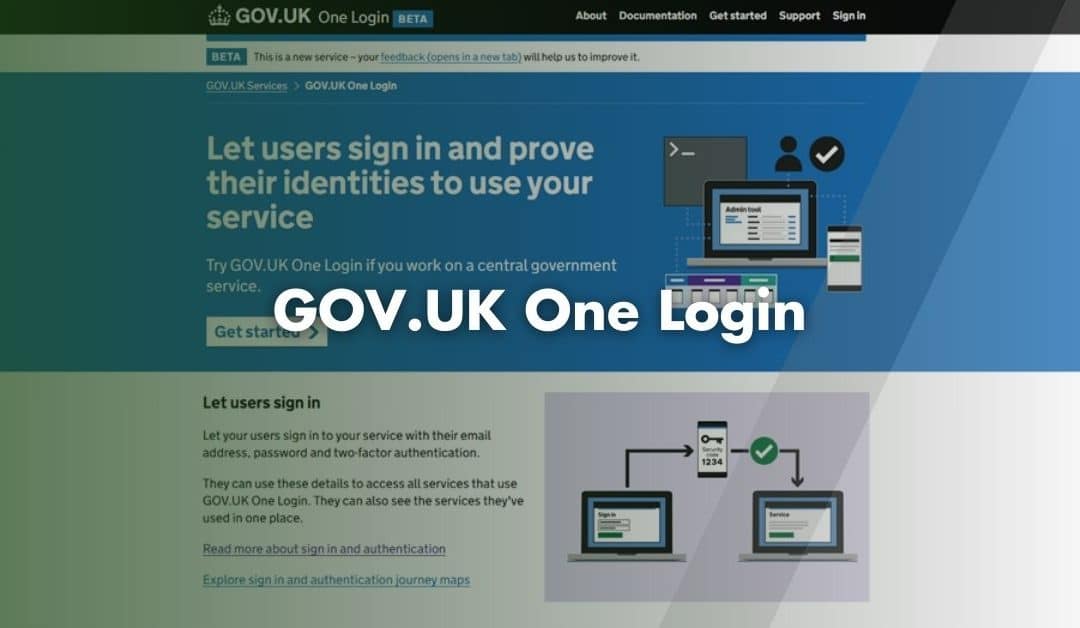Accessing different government services online used to mean juggling a long list of usernames, passwords and sign-in methods. Some departments shared common systems, such as Government Gateway, but many still maintained their own separate logins. Now, the government is replacing that hassle with a simple and secure alternative: GOV.UK One Login.
This platform allows you to use one account to sign in to a growing list of government services with just an email address, a strong password and two-factor authentication.
Why They Built GOV.UK One Login
The Government Digital Service launched GOV.UK One Login in 2021 to streamline access to public services. Before this system, every department had to build and maintain its own identity verification and login processes. This created duplicate work and higher costs, with a patchwork of inconsistent user experiences.
GOV.UK One Login provides a single secure way to sign in and prove your identity across government services, replacing systems such as Government Gateway over time.
Which Services Already Use It?
More and more services are joining GOV.UK One Login every month. As of 2025, over 50 services are using it, according to the Government Digital Service. Some of the current services include:
- Apply for a vehicle operator licence
- Apprenticeship assessment service
- Cancel a lost or stolen passport
- Confirm my apprenticeship details
- Find and update company information
- GOV.UK email subscriptions
- Manage your State Pension account
- Request a basic DBS check
- Sign your mortgage deed
Eventually, most services currently using platforms such as Government Gateway are planned to migrate to GOV.UK One Login. Check out the full list of services on GOV.UK.
How to Create Your GOV.UK One Login
1. Visit a participating service and click “Create your GOV.UK One Login”
2. Enter your email address and input the confirmation code sent to your inbox
3. Provide your full name and create a strong password
4. Choose a recovery word in case you ever need to reset your password
5. Set up Two-Factor Authentication via text message or an authenticator app
Once you set your account up, you can manage login details and access services from one central location. You can also delete your account should you ever need or want to. The system may retain some account data for audit and fraud prevention.
How to Prove Your Identity
Some services also require extra security, which means proving your identity. You usually only need to do this once, unless a service requires extra verification for security reasons. After verification, the system saves your identity so that other services requiring it will recognise your initial check.
There are three main methods:
1. Use a Mobile App
Download the GOV.UK ID Check or One Login App and follow the prompts. You will also need:
- A UK photocard driving licence
- A UK or non-UK passport with a biometric chip
- A UK Biometric Residence Permit (BRP)
- A Biometric Residence Card (BRC)
- A Frontier Worker Permit (FWP)
Your phone must also be compatible. iPhones must be 6S or newer running iOS 15 or above, and Android devices need Android 10 or later.
2. Answer Security Questions Online
Alternatively, answer questions about your financial history. This may include information on your bank account, credit card, mortgage or phone contract. You will also need a UK passport or driving licence.
3. Visit a Post Office
Enter your ID details online, then go to a participating Post Office for an in-person verification. Staff will scan your ID and take your photo. You will usually receive your result by email within a day.
Contact Us
We are not just accountants; we are Chartered Accountants with one of the most reputable and premium accounting bodies. We are registered and regulated by ACCA; so you can rest assured that you are in good hands. Knowing this, don’t hesitate to get in touch with us if you require assistance: Pi Accountancy | Contact Us
This article is for general informational purposes only and does not constitute legal or financial advice. While we aim to keep our content up to date and accurate, UK tax laws and regulations are subject to change. Please speak to an accountant or tax professional for advice tailored to your individual circumstances. Pi Accountancy accepts no responsibility for any issues arising from reliance on the information provided.

